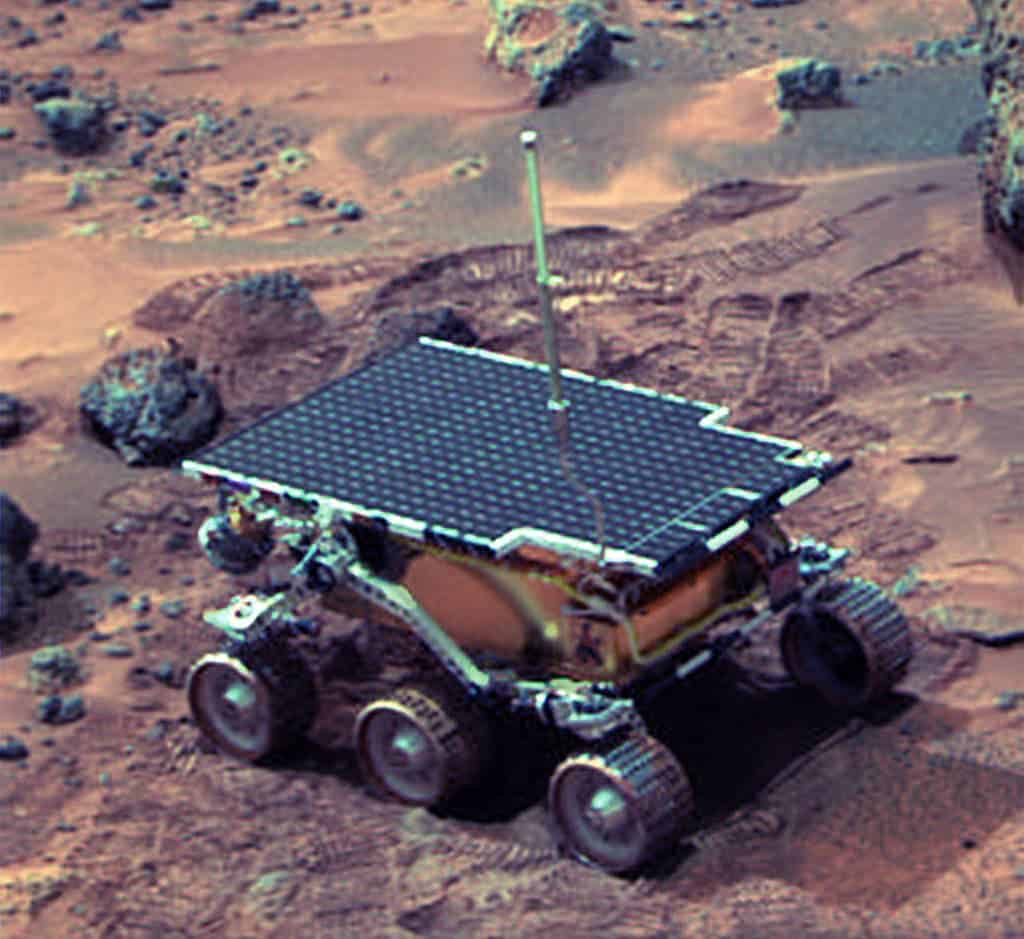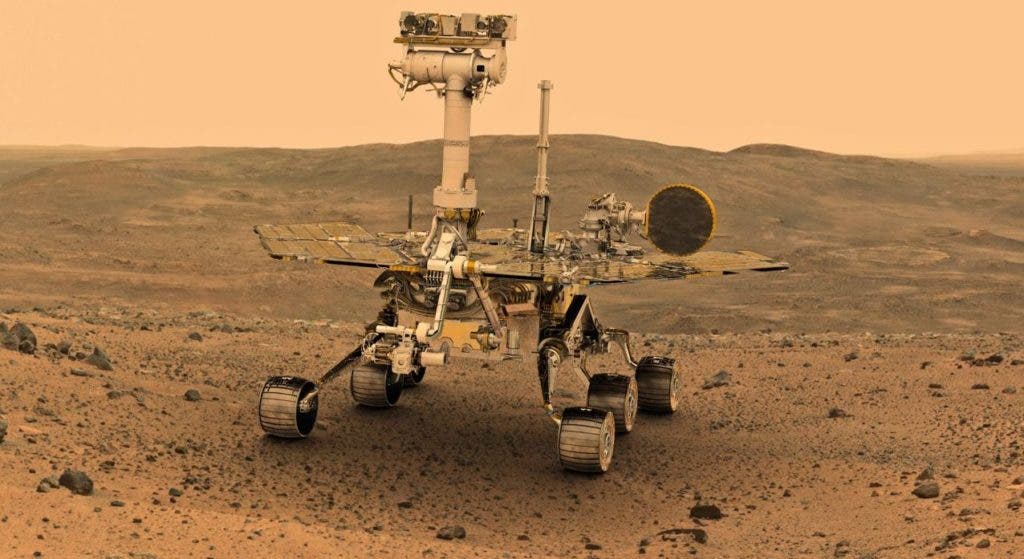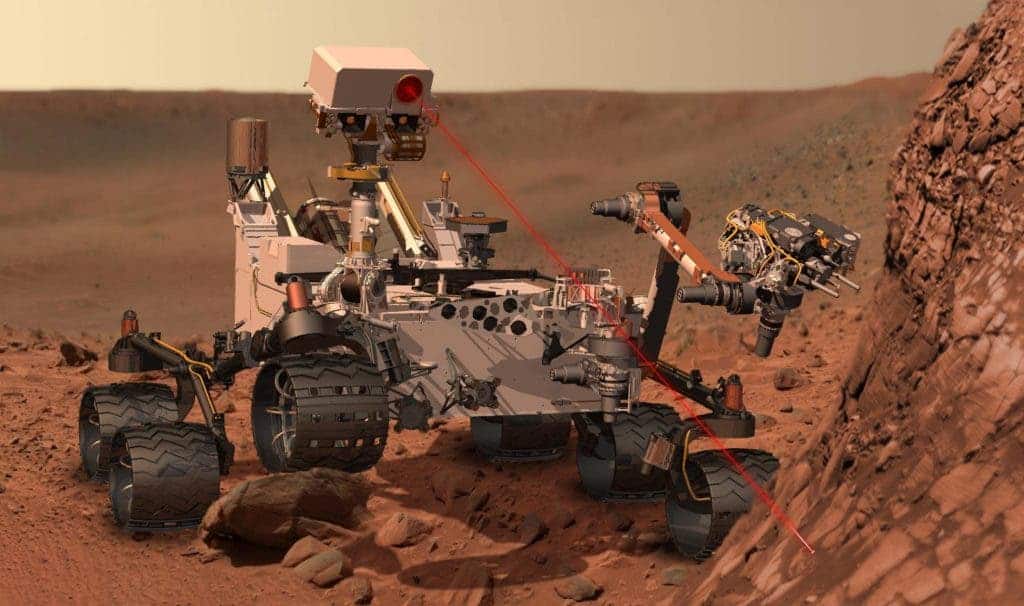
Since Nicolaus Copernicus first described Mars’ rotation around the sun in his heliocentrism theory in 1543, the Red Planet has been an object of fascination. From Eugene Antoniadi‘s first production of the most accurate maps of Mars in the pre-Space Age era, to the InSight lander, our gaze has always reached skyward toward the planet which the Romans named after the God of War.
In his 1990 book, “Mars Beckons,” John Noble Wilford stated “Mars tugs at the human imagination like no other planet. With a force mightier than gravity, it attracts the eye to the shimmering red presence in the clear night sky.”
It has been with that outlook that mankind has pursued exploration. The latest vehicle to touch down is InSight probe, with the Mars 2020 Rover next on the planet’s dance card, and a manned landing is supposedly 20 years down the road (although to be fair, boots on Mars have always been 20 years down the road since the 1960s).
With new discoveries seemingly happening on a regular basis, we should all remember some of exploits Mars exploration’s past which is helping shape its future.
The arms race to Mars
When robotic exploration first began, the Soviet Union looked to have the early lead. Only three years after a successful Sputnik launch, they decided to bypass any moon exploration and head straight for our nearest planet. Their first two tries with the romantically named 1M No.1 and 1M No.2 in October 1960 were both destroyed before even reaching orbit. Attempt number three on October 24, 1962 with 2MV-4 No.1 — more tongue-pleasingly known as Sputnik 22 — made it only slightly farther, arriving in Earths low-orbit before it too was destroyed. Their fourth attempt with the orbiter Mars 1 made it beyond Earth’s gravity for almost five months before contact was lost.
Two years later in 1964, the United States tried their luck with mixed results. An hour into Mariner 3‘s mission, problems were found with the solar panels. Ground crews were unable to fix the issue before the batteries died and the mission was considered a failure. However, Mariner 4, launched 23 days later, was officially the first successful craft to reach Mars in its July 14, 1965 flyby.

Two days after Mariner 4 made it out of Earth’s orbit, the USSR sent off Zond 2, which actually reached Mars, but experienced radio failure and no data was received. After several more failures, the Soviets finally hit paydirt (sort of) when Mars 2 entered Martian orbit on November 27, 1971 where it made 362 trips around the planet. The lander which accompanied Mars 2 officially became the first human-made object to land on Mars. Although “land” would be a relative term, as it actually “landed” with all of the grace of a demolition derby, pancaking itself onto the surface after the parachute failed to deploy.
With Mars 3 though, the Soviet Union could say they became the first country to successfully place a craft on Mars. The orbiter made its first trip around the Red Planet on December 3, 1971 while the lander successfully touched down and began transmissions to its sister craft…for 20 seconds. After that, the transmission was lost and never recovered. The failure is thought to have been due to a dust storm, and sadly, that was the last major success for the Soviets. A later flight, Mars 5, returned 180 frames back to Earth before the spacecraft’s pressurized instrument compartment began to leak. Only 43 of those pictures were of usable quality.
The U.S. scored another victory when Mariner 9 became the first craft to return a large number of usable photos. Orbiting Mars for nearly a year, it sent back 7,329 photos and discovered the tops of dormant volcanoes and a huge rift across the planet later coined Valles Marineris.

Fast forward to Viking 1 whose images became iconic as the first ever taken from Mars, revealing an awe-inspiring desert landscape. Data from Viking 1 returned its first data on July 20, 1976, seven years to the day of the first Moon landing. The Viking 1 orbiter rounded the planet 1,385 times while the lander operated for 2,245 sols and revealed that the composition of Mars was almost identical to meteorites which had been found on Earth. Its sister craft, Viking 2‘s orbiter circled Mars 700 times with its lander operating for 1,281 sols.

One of the more famous losses in the Mars saga came with the Mars Observer. In an era of “Better, Faster, Cheaper”, the project was estimated to have cost NASA $813 million, four times the original budget. NASA lost radio communications with the craft and never regained it. The mission was considered lost just before it was supposed to achieve Mars orbit on August 21, 1993.
“That was a really, really horrible feeling to have worked on something for five or six years, and then suddenly it’s all gone,” said InSight science lead Bruce Banerdt, who worked on the Mars Observer, on NASA’s On a Mission podcast. “Later on, they found a design flaw in the propulsion system, which likely allowed the fuel to mix with the oxidizer in the wrong place, and probably blow a hole in the side of the spacecraft.”
Touching down on Martian soil

When the skateboard-sized Sojourner rover touched the Martian surface in July of 1997, everything changed. Aside from becoming the first wheeled explorer of Mars, its mother lander, Pathfinder, used the novel idea of airbags to land instead of the conventional rockets, a technological first.
Shortly after the arrival of Pathfinder and Sojourner, the Mars Global Surveyor (MGS) made its appearance at the Red Planet. Leaving Earth on November 7, 1996, MGS arrived on September 12 the next year and mapped Mars from pole to pole. While it was not made official until Spirit and Opportunity studied the planet seven years later, MGS discovered gullies and a shiny grey mineral called hematite, groundbreaking finds because they are general signs that water once existed. MGS’s mission was extended several times until contact was eventually lost in 2006.

NASA’s Mars Exploration Rover Mission (MER) brought about the birth of the rovers Spirit and Opportunity. After seven months in route, the pair landed in January of 2004. It was from Oppy that MGS’s discovery was confirmed — the discovery of jarosite and hematite, two minerals that need water and acidic conditions to be formed. While the two were expected to survive only three months, they long outlived that lifespan. Spirit operated for five years while Oppy finally gave up the ghost in 2018.
Scott Maxwell was a rover driver for Spirit, Opportunity and Curiosity, and author of the blog Mars and Me.
“(Spirit) was the first rover I ever drove, and — well, it’s like your first car, or your first crush. Or like both of those things at the same time,” he said in an email. “Spirit was definitely the underdog, because she landed in a part of Mars that turned out to have buried the water evidence she went all the way there to find. She had to survive longer than she was designed to survive, and push herself farther than she was ever meant to go, and even climb a Martian mountain, to find what she went there for. A lot of people gave up on her along the way, but I and a few others never did. And she proved us right, in the end.”
The Mars Reconnaissance Orbiter (MRO) was launched on August 12, 2005, for its seven-month voyage to Mars. MRO arrived on March 10, 2006, and began its scientific mission in November 2006. It also just recently made its 60,000th loop around the planet. Upon its creation, MRO carried the most powerful telescopic camera ever flown to another planet. This enabled the satellite to show Martian landscape features as small as a kitchen table from the spacecraft’s low orbital altitude. MRO also plays a critical role in future landing craft.
“We are counting on Mars Reconnaissance Orbiter remaining in service for many more years,” said Michael Meyer, lead scientist of NASA’s Mars Exploration Program at the agency’s Washington headquarters. “It’s not just the communications relay that MRO provides, as important as that is. It’s also the science-instrument observations. Those help us understand potential landing sites before they are visited, and interpret how the findings on the surface relate to the planet as a whole.”
The Phoenix Mars Lander took off for its journey on August 4, 2007, and landed on Mars on May 25, 2008. Phoenix was the first in NASA’s Scout Program and was designed to study the history of water and habitability potential in the Martian arctic’s ice-rich soil. A solar-powered lander, it completed its three-month mission and kept working until sunlight waned two months later. The mission was officially ended in May 2010. The Mars Scout Program involved low-cost spacecraft (less than $450 million) but was canceled in 2010 after approval of MAVEN (Mars Atmospheric and Volatile EvolutioN).

Curiosity, part of NASA’s $2.5 billion Mars Science Laboratory mission, has one primary goal — to find life, or signs of it at least. It is tasked with characterizing the climate and geography on Mars to see if life had once graced the planet and if it might be suitable to once again sustain life.
Humans on Mars — the ultimate goal
The car-sized rover landed on August 6, 2012, in Gale Crater (or if you’re a detractor…Canada) after a daring sequence that NASA dubbed “Seven Minutes of Terror” due to its novel landing. The spacecraft descended on a parachute, then during the final seconds before landing, the landing system fired rockets to allow it to hover while a tether lowered Curiosity to the surface. The rover then landed on its wheels, the tether was cut, and the landing system flew off to crash-land a safe distance away.
To make its search, Curiosity was armed with an instrument from the Russian Federal Space Agency. The Dynamic Albedo of Neutrons experiment blasts 10 million neutrons into the surface with every pulse. Each of these searches for one atom: hydrogen, one of the primary ingredients in water. Curiosity didn’t have to travel far to find its evidence. Research from the rover found that it’s landing crater could have been habitable for 700 million years.
Maxwell said that driving Curiosity and the two MER rovers was one of the best experiences of his life. “Being a Mars rover driver was like stepping into the fantasy world I had when I was a kid and having it become my reality. And the best part was that I got to take all of humanity along for the ride.”
MAVEN was the second mission selected for the Mars Scout program. It launched on November 18, 2013, and entered orbit around Mars on September 21, 2014. MAVEN’s ongoing mission is to obtain measurements of the Martian atmosphere to further understanding the dramatic climate change that has occurred over the course of its history. In early 2019, the satellite was shifted to a lower orbit to prepare it to take on additional responsibility as a data-relay satellite for NASA’s Mars 2020 Rover.
While previous missions have only studied Mars skin deep, InSight, or the Interior Exploration using Seismic Investigations, Geodesy and Heat Transport for those who like lots of words and have too much time, is investigating Mars’ deep interior with thermal probes and seismometry, an approach scientists believe will address questions about the Mars’ formation and composition. The lander hit the Martian surface in November 2018 and is undergoing a two-year mission to study the deep interior of Mars to learn how all celestial bodies with rocky surfaces, including Earth and the Moon, formed.
“Earth and Mars were molded out of very similar stuff,” said Bruce Banerdt, InSight’s principal investigator at JPL, which leads the mission. “Why did the finished planets turn out so differently? Our measurements will help us turn back the clock and understand what produced a verdant Earth but a desolate Mars.”
There have truly been abundant research and time geared toward discovering more about our nearest celestial neighbor. All of this will hopefully one day pave the way for humans to land on the planet in what would be the greatest feat humans have ever performed outside of Earth’s orbit.
“Someday people will travel to Mars,” said seventh-grader J. Stephen Hartsfield in 1984. “It will be a long trip, but fun. This will be a big step for mankind.”


